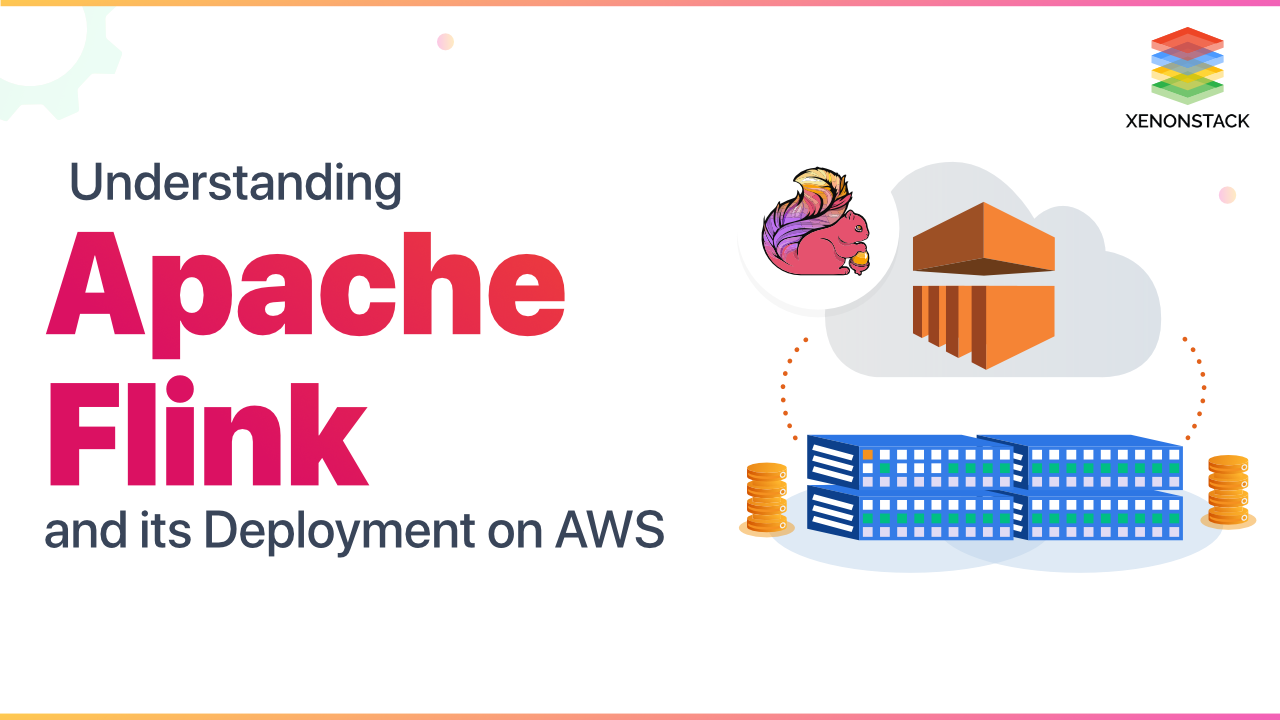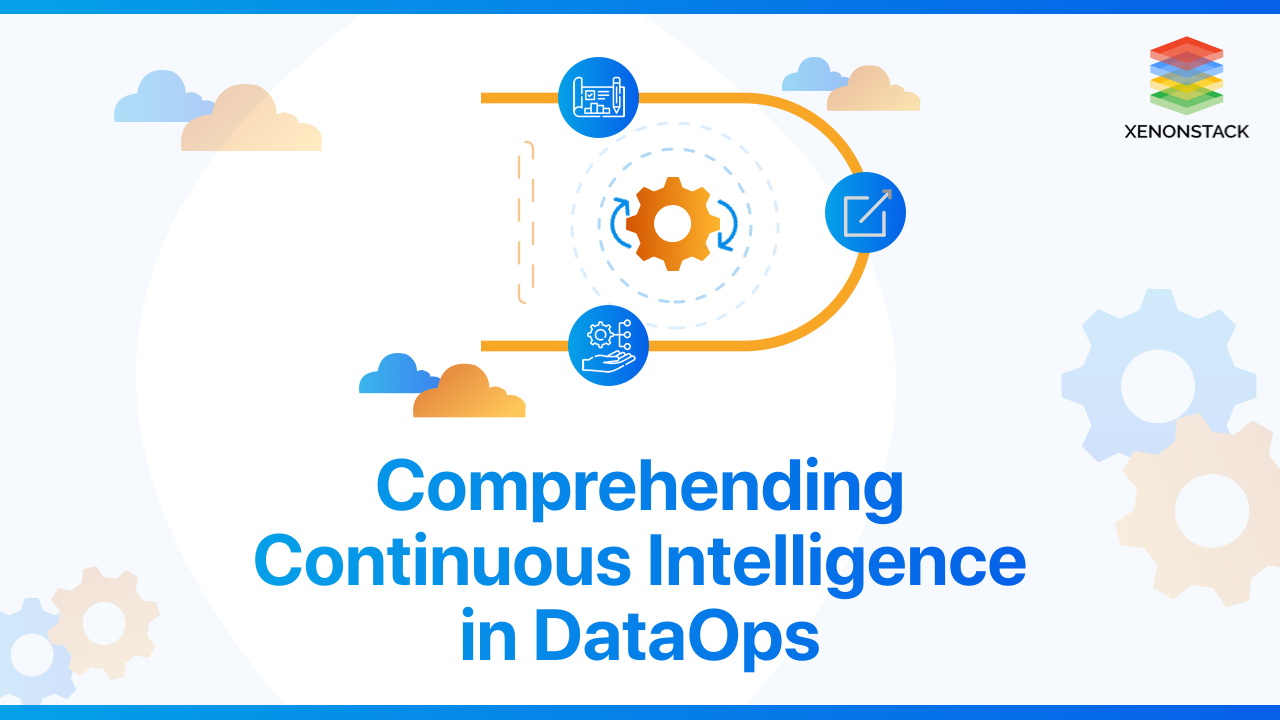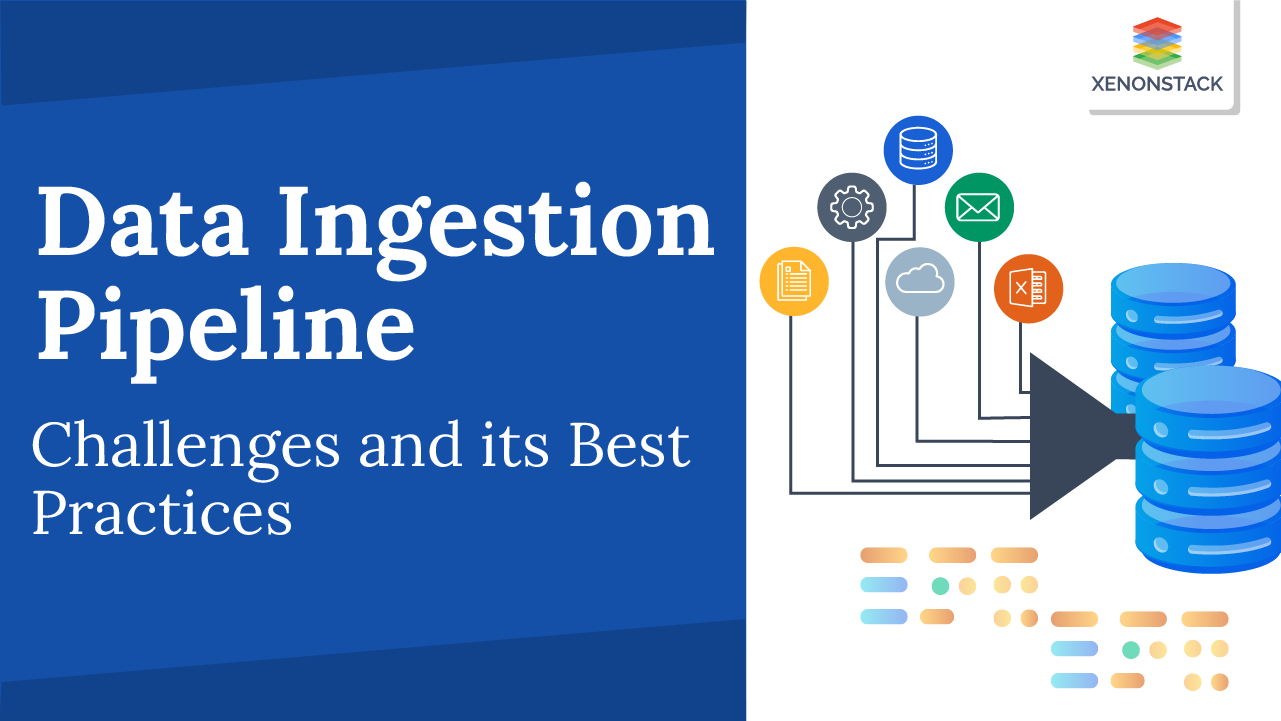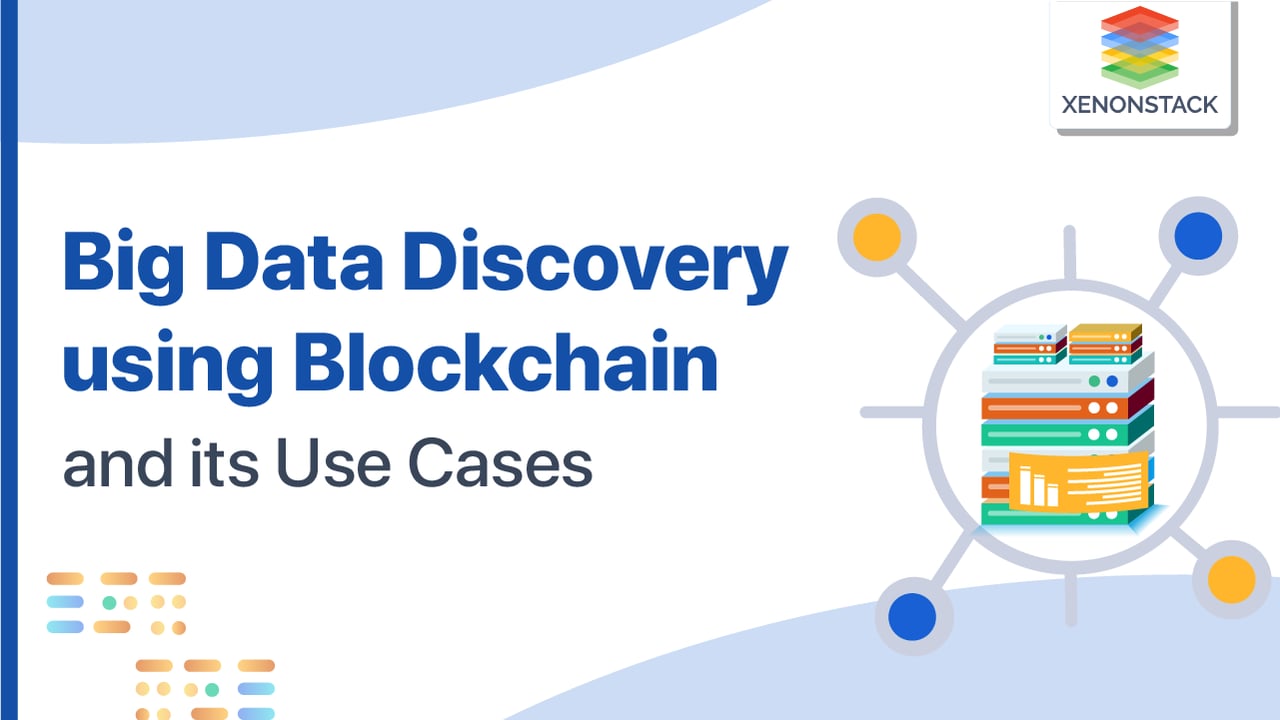
Introduction
Big Data Discovery is the logical combination of Big Data, Data Discovery, and Data Science. Each of these areas is in explosive growth. Big Data Discovery is a Hadoop-native end-to-end solution for visual Big Data analysis. It converts raw data into business insight in minutes, eliminating the need to master complicated products or rely only on highly specialized resources, allowing more people to benefit from Big Data. You begin with a Hadoop visual library of data that allows you to quickly locate essential data sets and explore them better to understand their structure, quality, and overall potential. You continue to convert and enhance data in Hadoop without complex modeling or code in the same prominent platform, simplifying prep and improving the data.
What is Big Data?
Big Data collects data in huge Volumes. It is so large and complex that no traditional data management tools can store and process it—examples of Big Data - Data generated by Social Media, New York Stock Exchanges.
Design the Data Pipelinewith the various requirements of either the Batch Processing System or Stream Processing System. Click to explore about our, Big Data Architecture Layers
What are the types of Big Data?
- Structured - RDBMS Data, Excel Data
- Semi-Structured - XML, Other markup languages
- Unstructured - Google Search, Word File
Why is Big Data important?
- Determining the root cause of failure and defects in near-real-time.
- Spotting errors faster than the human eye.
- Detecting fraudulent activity before it affects your organization.
What is Data Discovery?
Data Discovery is collecting and evaluating data from different sources. It is used to understand the trends and patterns in the data. Data Discovery is connected with Business Intelligence; it helps make informed decisions by analyzing data.
What is Data Science?
Data Science is a field in which we collect knowledge from any Data, i.e., structured, semi-structured, and unstructured, using Algorithms, tools, and Scientific methods. It includes cleaning, aggregating, and manipulating the Data. It uses mathematical theory(Statistics and Probability) and computer tools to process Big Data.
Having a solid data strategy that allows businesses to make the most of their data and business intelligence investments. Taken From Article, Elements of Data Strategy
Challenges faced in Big Data Discovery through Blockchain
In Big Data Discovery, the different challenges Blockchain can create are :
Data Immutability
Data Immutability is the ability of the blockchain ledger to be unaltered. This means the data in the Blockchain can’t be changed. Further, each data block, i.e., transaction details in the Blockchain, uses a hash value to keep the data unaltered. Immutability will hurt performance as you can only create new objects but can’t mutate the existing ones.
Low Scalability
Low Scalability refers to the limited capacity of Blockchain to handle large amounts of transactions in a short period. Blockchain works fine for fewer data and users, but when the data increases on the network, the transactions take longer to process.
No Regulation
- The technology in the Blockchain allows users to do transactions without any intermediaries. The Bitcoin blockchain is unregulated as data is sent directly to others without the involvement of an intermediary. For that reason, they are outside the control of people & companies.
- Blockchain will make the data almost impossible to manipulate through decentralized systems, consensus algorithms, and cryptography because a huge amount of computing power will be required.
Can Blockchain Security be Breached?
- 51% Rule: 51% attack in the Blockchain by the group of miners who controls more than the 50% of mining hash rate can control the whole Blockchain.
- Quantum Computers: Quantum computers can factor large prime numbers, a critical component of blockchain public-key cryptography.
Remove this third-party involvement and keeping the transactions only limited to the sender and the receiver. Click to explore about our, Decentralized Applications
What is Blockchain?
The first question that arises in our mind is how the Blockchain begins, so I start with the Subprime Crisis, which happened in 2008 in the USA. The USA applied Quantitative easing in the market, which resulted in increased dollar supply. The Anarchist group was bored of the Fiat Currency and Bank charges on use of Credit & Debit Card, NetBanking, etc., which resulted in the finding of BitCoin, the first example of BlockChain when Satoshi Nakomoto released a whitePaper on it.
Blockchain Technology is based on the cryptographic hashing technique.- Blockchain is a digital ledger of transactions that is distributed over a network of Blockchain. Each block in the chain has numerous transactions & when a new transaction is done, that is appended to every participant’s ledger.
Why do we need Blockchain for Big Data Discovery?
With the use of Blockchain, Big Data Scientists ensure the safety and quality of their data are intact. By placing their database in Blockchain, they ensure that every user has access to the same information which can’t be manipulated. Blockchain is decentralized, encrypted, and cross-checked, which allows the data to be strongly backed. Blockchain is a kind of database it stores data in data structures called blocks.
Data Security
Blockchain uses cryptographic hashing techniques and consensus algorithms to secure data. If some malicious request is received, the nodes will reject that request. Hence, Blockchain is safer than other technologies.
Data Immutability
Data immutability prohibits the in-place change. Instead of overriding existing data, we can append data. Immutability brings a lot of advantages: Easier recovery, data tolerance against human and machine errors.
Use of Blockchain-Based Data
Blockchain-based data is secure, structured, and immutable. So we can easily use it in machine learning algorithms. The specific and organized nature of structured data allows for easy manipulation and querying. So we can extract information easily from the Blockchain-based data.
BlockChains can support the creation of new, more efficient business processes. Click to explore about our, BlockChain App Deployment with Microservices
How does Blockchain Work?
Understanding how How blockchain works step by step below. before that we must understand the two terms below highlighted:
What is Cryptographic Hashing?
A cryptographic hash function is a deterministic procedure that takes an arbitrary data block and returns a fixed-size bit string, the cryptographic hash value. An accidental or intentional change to data will change the cryptographic hash value. The data that needs to be encoded is often called the message. The message generated by the hash is irreversible.
E.g., Bitcoin uses SHA-256(Secure Hash Algorithm 256-bit or 64 characters). The Algorithm generates random numbers so that it requires a predictable amount of processing power.
What is Consensus Algorithm?
A consensus algorithm is a protocol through which all the parties of the network come together to a consensus on the present state of the ledger and trust unknown peers in a distributed computing system. Consensus allows adding a new block to be added in the Blockchain without compromising the integrity of data in the Digital Ledger.
Working diagram of Blockchain step by step :
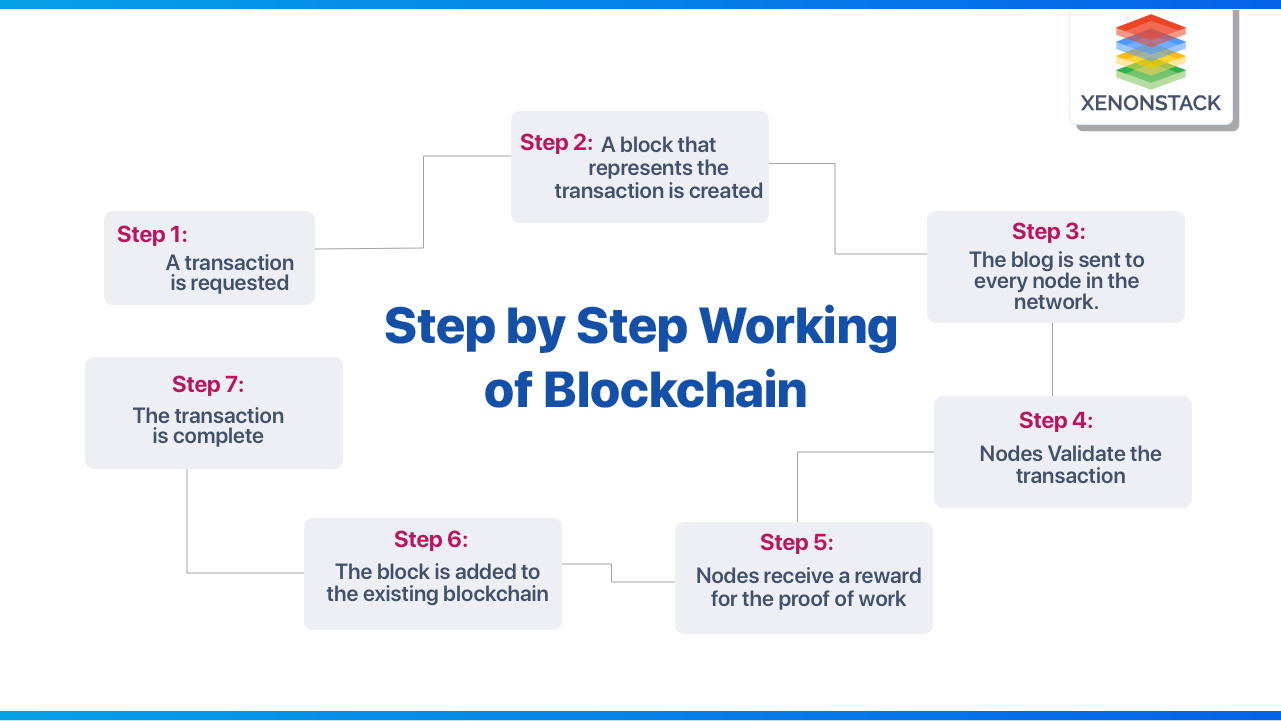
- Nodes: A decentralized ledger that records all transactions.
- Reward: Reward refers to the number of Bitcoins you get if you successfully mine a currency.
What are the benefits of Blockchain?
Blockchain has various benefits in various categories highlighted below:
How does Blockchain help Businesses?
Blockchain helps businesses in every aspect as mentioned below:
Enhanced Security
- With Blockchain, your business is protected with a high level of security. Blockchain technology has advanced security compared to other platforms. Any transaction done needs to be agreed on consensus method.
- Security is also enhanced as each node has a copy of the transaction performed, so if some attacker wants to perform a malicious transaction, the other nodes will reject his request.
- Blockchain networks are also immutable, which means the data, once written, can’t be changed by any means.
Provides seamless connectivity and is powered by smart contracts and permission to access all electronic medical records. Click to explore about our, Blockchain in Healthcare Industry
Reduced Costs
- Organizations can bring down a lot of costs used in Third-Parties. Blockchain is not centralized, so there’s no need to pay to any intermediaries.
Organizations that use Blockchain are
AWS, Oracle, Alibaba Cloud, Hewlett Packard Enterprise, Microsoft,
Nvidia, Samsung, Walmart, etc.
Faster Transactions with Blockchain
Other industries have a lot of intermediaries, such as Advertising, so there is a lack
of transparency. Blockchain technology can improve transaction speed as it cuts down many of the unimportant intermediaries. The shorter the supply chain, the faster the transactions are. e.g., If we compare, NEFT takes a 1 hr cycle for a transaction, whereas BitCoin takes 10 minutes.
Transparency in Blockchain
- Blockchain is transparent as anyone can join the network and can view all the transactions in that network. Through the encryption, mechanism blockchain safeguards transparency by storing information in such a way that it can’t be altered.
- The records stored in the Blockchain are encrypted. This means that only the owner of that record can decrypt it to reveal their identity (using public-private key-pair).
The main difference between Blockchain and databases are :
|
Database |
Blockchain |
|
Requires Administrator |
No Administrator |
|
Permissioned |
Permission Less |
|
Centralized |
Decentralized |
Conclusion
Blockchain technology can be quite complementary for the future world by transforming businesses. It revolutionizes the supply chain, financial services, government, and more. Blockchain is a new technology, but it has made a significant impact by developing trust between persons and organizations. Greater confidence leads to greater efficiency, which blockchain provides. The Blockchain market size is estimated to grow from 5 billion USD in 2021 to 60 Billion in 2026, so we can figure out the possibility of more growth in the Blockchain sector and blockchain-based data.
- Read more about Data Catalog with Data Discovery
- Click to explore Emerging Modern Data Infrastructure | A Brief Study
